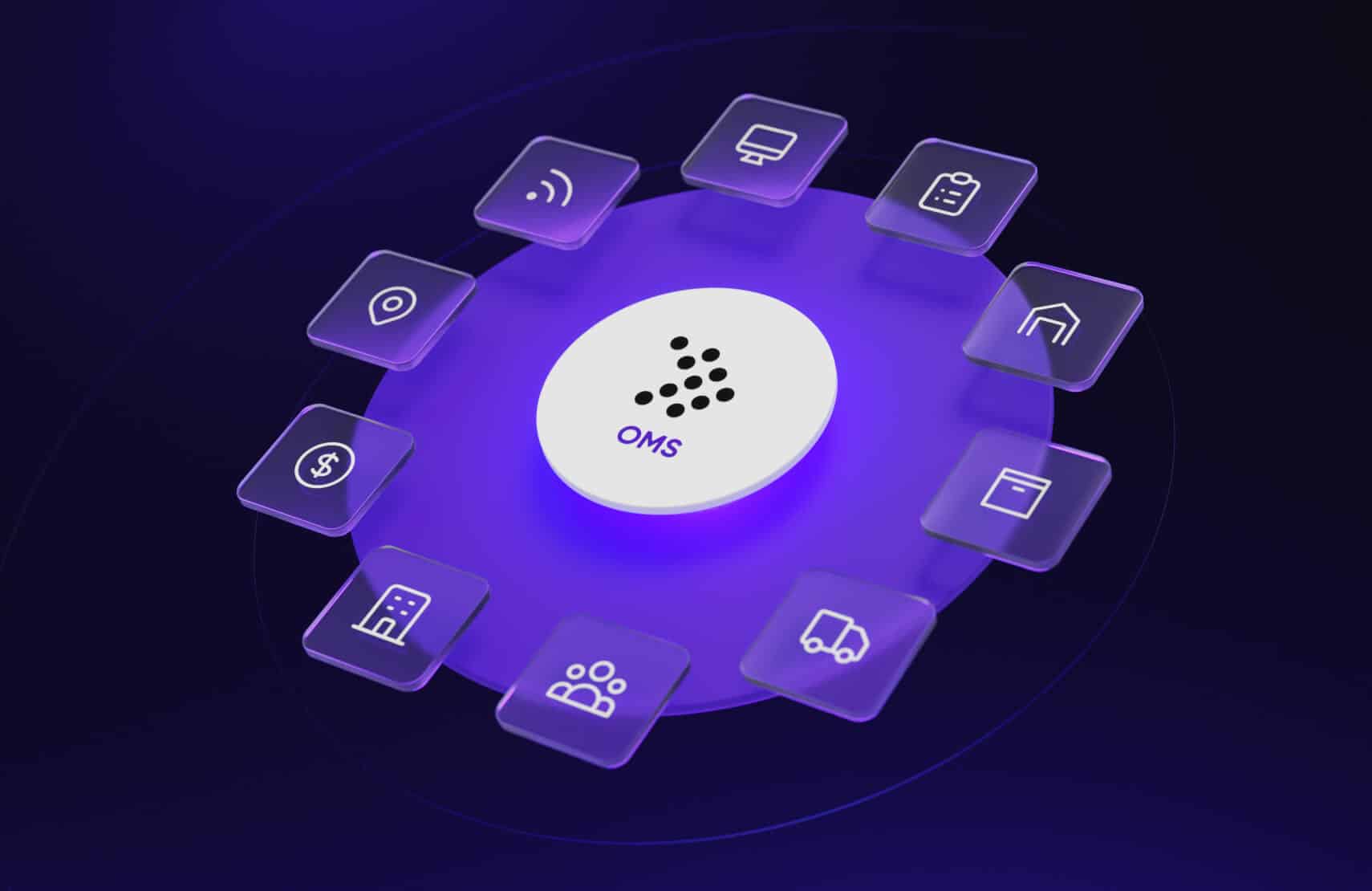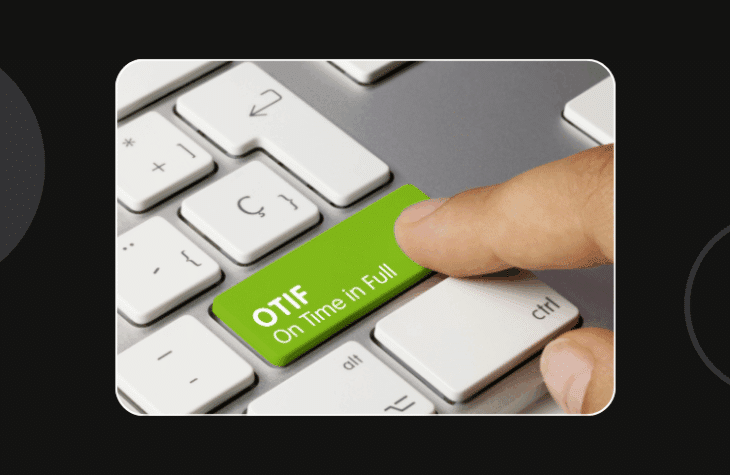What is Order Management? A Comprehensive Guide for Enterprise Retailers

Order management is a process that streamlines all the activities from the moment a customer places an order to when their package is delivered successfully.
A strong OMS includes real-time inventory visibility, intelligent order routing, store fulfillment services, pre-order/backorder management, core OMS capabilities, customer service tools, and pre-built integrations/APIs.
fabric OMS boosts accuracy, speed, fulfillment, customer experience, and efficiency/savings.
Updated February 13, 2025
Imagine a customer places an order for a pair of sneakers online, expecting delivery within three days. However, due to outdated inventory data, the sneakers aren’t in stock, and the delivery is delayed by weeks. Frustrated, the customer cancels the order. This scenario could have been easily avoided with a well-integrated order management system (OMS).
Simply put, order management is a process that streamlines all the activities from the moment a customer places an order to when their package is delivered successfully. But managing orders across multiple channels and touchpoints is not without its hassles. It requires advanced capabilities like real-time inventory visibility, precise order routing, accurate shipping details, and omnichannel fulfillment to cut costs, reduce delays, and keep customers happy.
With online sales growth exploding—up 10% last year to $1.2 trillion—, the pressure is on for enterprise retailers to adapt. But traditional approaches to order management can’t keep up with modern demands. Surveys show that 73% of consumers have experienced delivery failures, citing late deliveries, missed expectations, and slow shipping as top frustrations. Worse yet, 85% of shoppers say a poor delivery experience would prevent them from returning to a retailer.
This is where modern order management steps in. With the right tools and insights, enterprise retailers can tackle these challenges head-on, delivering seamless order fulfillment experiences. In this article, we’ll dive into the core elements of order management, explore its benefits for enterprise retailers, review top software options, and share best practices to help you optimize your operations.
Key elements of order management
Below are the key elements of a robust order management system that promise operational efficiency and enhanced customer satisfaction.
Real-time inventory
By maintaining complete visibility across all inventory locations—including warehouses, stores, and third-party vendors—retailers can optimize stock levels, determine when and where to replenish inventory, and avoid overselling or underselling.
Order fulfillment logic
With AI-backed order fulfillment logic, retailers can optimize how orders are routed and fulfilled by considering factors like weather conditions, inventory levels, and proximity to the customer. This helps reduce shipping costs and delivery times.
Store fulfillment services
Services such as Buy Online, Pick Up In Store (BOPIS), Ship from Store (SFS), and other store-based fulfillment methods help retailers turn their physical stores into fulfillment centers, increasing sell-through rates and customer convenience.
These services can be managed through an easy-to-use store fulfillment app that provides real-time access to order history and inventory.
Pre-orders and backorders
Backorders allow customers to secure items that are temporarily out of stock, while pre-orders enable retailers to gauge demand for upcoming products and ensure production and inventory align with customer interest. Both features improve inventory utilization and foster trust by keeping customers informed about product availability and delivery timelines.
Core OMS capabilities
An efficient order management system should simplify core functions such as order lookup and editing. These capabilities are essential for addressing customer needs quickly—whether it is to modify shipping addresses or add items to existing orders.
Customer service tools
Tools that enable quick order creation, seamless handling of returns, and appeasements for dissatisfied customers are indispensable. A well-integrated system empowers customer service representatives to address concerns efficiently, turning potential negative experiences into opportunities to build loyalty.
Prebuilt integrations, APIs, and webhooks
Scalability and adaptability are essential for enterprise retailers. A robust OMS should offer prebuilt integrations, APIs, and webhooks to seamlessly connect with existing systems, such as commerce platforms, payment gateways, and logistics providers. This composable architecture allows businesses to adapt quickly to new technologies and market demands, ensuring long-term operational efficiency and reduced development time.
Benefits of order management for enterprises
If you want to stay ahead of the competition and keep up with the demands of customers and the ever-changing digital world, order management has got you covered.
Improved order accuracy
Order management systems can synchronize inventory data across distribution centers, dropship vendors, and third-party logistics. All this coupled with real-time visibility, enterprises can achieve precise order accuracy, confidently show what’s available, and reduce errors and overselling.
Accelerated order processing
The ability to configure fulfillment logic through a rules-based system helps process orders faster. Enterprises can quickly adapt to changes without the need for developers or custom coding and ensure customer orders are processed without delays.
Streamlined fulfillment processes
Optimizing fulfillment becomes effortless with insights into the best locations to ship from and flexible routing options. Businesses can reduce the inefficiencies of split shipments and choose cost-effective fulfillment strategies. Additionally, pre-orders and backorders capture demand for high-interest products, even when inventory is temporarily unavailable.
Enhanced customer experience
Order management systems offer seamless delivery options like BOPIS and SFS, which allow enterprises to cater to diverse shopping preferences and improve customer service. With transparent inventory status across all channels, businesses can enhance customer trust, while pre-order and backorder options keep customers engaged, even during high-demand periods.
Increased efficiency and cost savings
Enterprises using OMS reduce their TCO by 30%, thanks to integrations that minimize the need for ongoing maintenance and streamlined operations that enable businesses to leverage automated insights.
Enterprise order management software to consider
When selecting the right OMS for your enterprise, it’s crucial to consider your business’s unique needs. Let’s examine some of the legacy systems, point solutions, and integrated commerce platforms available.
fabric OMS
fabric OMS enables seamless order orchestration across digital, social, and physical channels. Its AI-driven optimization routes customer orders to the most efficient fulfillment centers, reducing costs, ensuring on-time delivery, and maximizing profitability.
Built for enterprise-scale operations, fabric OMS synchronizes inventory across warehouses, stores, and partners in real-time, minimizing stockouts and overselling. Its API-first architecture ensures seamless integration and scalability without disrupting existing systems. With advanced routing, real-time inventory visibility, and omnichannel fulfillment options like BOPIS and SFS, fabric OMS delivers efficient operations and flexible, customer-focused experiences.
Other notable OMS solutions
OMS legacy platforms
Manhattan Associates OMS
- Centralized view of customer transactions across multiple channels.
- Tracks orders, manages inventory, and ensures smooth fulfillment across brands and geographies.
- Requires extensive customization, which can be costly.
- Not part of a complete e-commerce platform, so it requires additional integrations.
IBM Sterling OMS
- Manages global inventories and order fulfillment with smart order routing capabilities.
- Ensures efficient and accurate deliveries across various channels.
- As an on-premise system, it may lead to performance issues, especially with large, diverse inventory networks.
- System upgrades can be complex and require dedicated technical resources, limiting flexibility.
OMS point solutions
Fluent Commerce
- Automates order routing, inventory updates, and shipment tracking.
- Features robust backend analytics to track customer behavior and optimize inventory.
- With its complex setup and steep learning curve, it requires a dedicated e-commerce IT team.
- Lacks a comprehensive e-commerce platform, so it leads to complex integration needs.
Pipe17
- Simplifies order management across different sales channels with automation and integration.
- Offers key features like automated order routing, inventory management, and fulfillment.
- Provides easy integration with third-party systems such as ERPs and e-commerce platforms.
- As a no-code interface, it makes it easier for businesses to optimize operations, but customization may still be required.
DeckCommerce
- Simplifies order management for multi-channel retailers.
- Features real-time inventory tracking, automated order routing, and integration with various sales channels.
- Easily integrates with existing e-commerce platforms.
- May not be as scalable for large enterprises compared to more comprehensive OMS solutions.
Commerce platform with an OMS
Kibo
- Integrates seamlessly with existing technology stacks.
- API-first approach for flexibility and scalability.
- Easily adaptable to meet evolving customer needs without disrupting operations.
- Provides a future-proof solution with the ability to add new features as required.
- Implementation can be complex, and integration options can be limited.
- Support responsiveness can be challenging, and the cost of ownership can be higher.
Best practices for effective order management
Here are strategies to ensure a smooth order management process and that orders reach customers quickly and accurately.
Choose the right OMS
Select an OMS with distributed order management (DOM) capabilities. This helps automate order routing, minimize shipping times, and reduce fulfillment costs.
Integrate fast with other systems
Ensure your OMS can easily integrate with other critical systems such as e-commerce platforms, ERPs, payment gateways, and back-office tools. This integration ensures smooth data flow and seamless operations.
Achieve real-time inventory visibility
Real-time visibility across all demand channels and fulfillment locations is crucial for effective inventory management. It helps prevent stockouts, reduces overstocks, and allows efficient order allocation.
Implement order fulfillment logic
Advanced order routing systems direct customer orders to the most optimal fulfillment locations based on inventory, proximity, and customer preferences. This helps reduce shipping times and costs.
Provide a mobile store fulfillment app
Give store associates a mobile app to easily pick and pack orders. This enhances in-store fulfillment efficiency, especially for services like BOPIS and SFS.
Launch store fulfillment services
Implement services like BOPIS, SFS, or other preferred fulfillment options to offer greater flexibility to customers. These services help turn stores into distribution hubs, enhancing overall fulfillment efficiency.
Automate order management functions
Automate key order management tasks like inventory updates, order routing, and customer communications to improve operational efficiency, reduce errors, and speed up the order fulfillment process.
Monitor and optimize processes
Continuously monitor order management KPIs and customer satisfaction metrics. Regularly evaluate and optimize processes to ensure smooth operations and meet evolving customer expectations.
Empower your enterprise with fabric OMS
Effective order management is essential for enterprise retailers looking to streamline operations, reduce costs, and enhance customer satisfaction. By implementing a well-integrated order management system, businesses can ensure real-time inventory visibility, smart order fulfillment, and flexibility in meeting customer demands.
fabric OMS offers a unified view of inventory across all demand channels and fulfillment locations, ensuring businesses can fulfill orders from the optimal location while reducing split shipments. It also provides the flexibility to launch services like BOPIS or SFS and efficiently manage orders through a mobile app. With seamless integration into your existing commerce ecosystem, fabric OMS can scale across brands and regions to meet evolving business needs.
By implementing a robust order management strategy built on an OMS foundation, enterprises can gain a competitive edge, deliver exceptional customer experiences, and improve operational efficiency. Ready to optimize your order management processes? Book your personalized demo to learn how fabric OMS can help you build a future-proof, integrated solution for your business.

Digital content editorial team @ fabric




